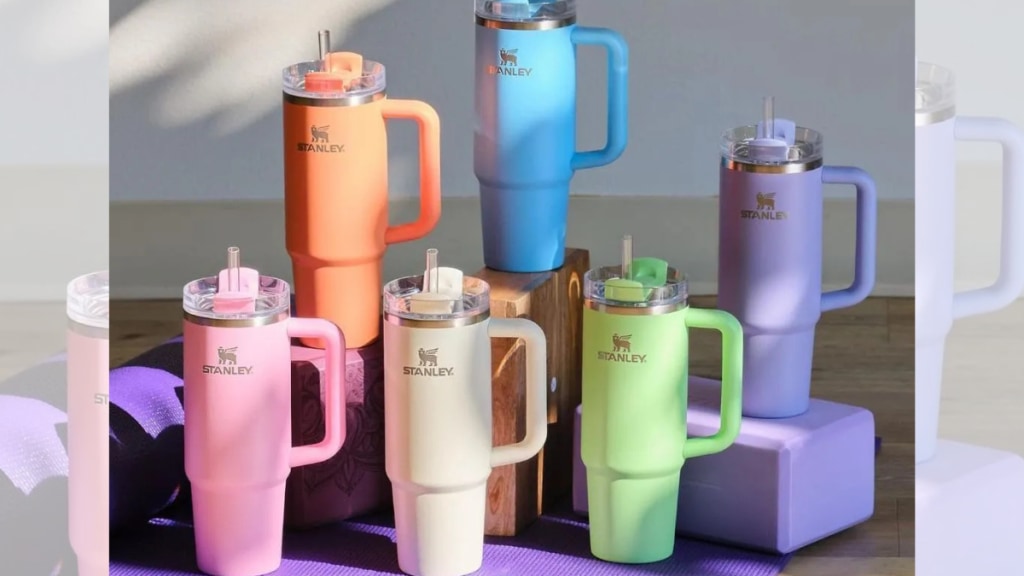A decade ago, watches and bags were treated as status symbols, while Indians have always treated water bottles as pure utility, a reused soft drink bottle, a stainless steel sipper costing not more than a few hundred rupees, etc.
But in 2023, a steel tumbler priced at over Rs 9,000 is being flaunted on Instagram reels, carried by celebrities at airports, and resold for a premium online, became the new status obsession. The Stanley Quencher, a 40-ounce tumbler, has not only changed how consumers think about hydration but also how a century-old brand can engineer a $750-million comeback. Indians, though, have made much more money out of that status symbol with millions of dupes in the market being sold at a fraction of the original price.
From military thermos to millennial trophy
Founded in 1913 by William Stanley Jr., the company was synonymous with utilitarian durability. Its steel vacuum bottles were tested by the U.S. Army in World War I and strapped into WWII fighter cockpits. Through much of the 20th century, Stanley products sat in lunchboxes of construction workers, miners, and truck drivers.
But by 2019, Stanley was a legacy player, its iconic green thermos a steady seller but not a growth engine. That year, sales hovered around $70 million, a fraction of what lay ahead.
The turning point came not from Stanley’s corporate offices but from a Utah-based lifestyle blog called The Buy Guide. In 2017, its founders, Ashlee LeSueur, Taylor Cannon, and Linley Hutchinson, stumbled upon the 40-ounce Stanley Quencher. Designed with a handle, wide straw, and insulation that kept water cold all day, it struck them as ideal for mothers, nurses, and teachers. Stanley had discontinued it due to poor sales. The women bought 5,000 units themselves. They sold out instantly.
TikTok, #WaterTok, and virality on fire
If The Buy Guide resuscitated the Quencher, TikTok made it immortal. Sub-communities such as #WaterTok (where creators share flavoured water “recipes”) turned the Stanley Quencher into a centrepiece. The hashtags tell the story: #StanleyTumbler has clocked over 10 million views, while #StanleyCup, no relation to ice hockey, has surged past 7 billion.
The viral peak came in 2023, when a woman’s car caught fire, and her Stanley Quencher, still filled with ice, survived. The video drew tens of millions of views. Stanley’s president, Terence Reilly, publicly offered to replace her car, cementing the brand’s social-first savvy.
Not only did Western influencers and TikTokTikTok creators fuel the craze, but the Stanley Quencher also began making its way into India’s lifestyle ecosystem. The pastel-coloured tumblers soon appeared in Instagram reels and wellness vlogs by Indian influencers. Bollywood celebrities and cricketers have been spotted carrying the bottles at airports and gyms, further amplifying their aspirational value.
The Reilly playbook
Reilly, recruited in 2020 after his success in transforming Crocs into a $2 billion global turnaround, introduced the sneaker-drop playbook to Stanley. The tumbler, once a $40 utility, was repositioned as a lifestyle accessory with scarcity baked into its business model.
Partnerships with Starbucks, Target, and country star Lainey Wilson created stampedes. A “Winter Pink” edition sold out in minutes and fetched hundreds of dollars on resale sites. Stanley abandoned camouflage greens for pastel shades, metallics, and glitter finishes, aligning with millennial and Gen Z aesthetics. Beyond The Buy Guide, “momfluencers,” Mormon lifestyle creators, and TikTok personalities helped make Stanley a marker of wellness and taste.
The results were staggering. Stanley’s revenue grew more than tenfold in four years, hitting $750 million by 2023. Sales of the Quencher alone accounted for nearly 75% of revenue, according to company disclosures.
More than hydration
For many consumers, a Stanley tumbler is no longer just a water bottle. It functions as what economists call a Veblen good, its desirability increases with its price and exclusivity. Collectors own dozens, proudly displaying colour-coordinated walls of tumblers on Instagram. Among younger buyers, especially teenage girls, the bottle has become a symbol of belonging; off-brand imitations are seen as social liabilities.
Hydration culture has only amplified the craze. Millennials and Gen Z, raised in the bottled water era of Evian and Fiji, now treat daily water intake as a form of wellness signalling. The 40-ounce Quencher, with its straw and insulation, is designed for exactly that.
India, too, has seen a quiet shift in hydration habits. While copper and stainless-steel flasks remain household staples, urban millennials and Gen Z are gravitating towards premium bottles and tumblers as lifestyle accessories. Domestic players like Milton, Borosil, and Cello dominate, but premium imports, including Stanley tumblers sold through resellers at upwards of Rs 1000 and original prices at Rs 9000 onwards, are beginning to find takers among aspirational buyers
The backlash
Yet the very intensity of the craze raises questions. Collectors stockpiling dozens of tumblers contradict the eco-friendly premise of reusable bottles. Reports of lead in Stanley’s manufacturing sparked health concerns, though the company has insisted its products remain safe. And as with Hydro Flask and S’well before it, cultural fads can fade quickly. New players such as Owala are already positioning themselves as the next cult water bottle.
Whether the Quencher holds its status or fades as a fad, its ascent offers a playbook for any heritage brand trying to break into a new generation: durability is not enough; in the age of social media, products must also quench the thirst for belonging.
